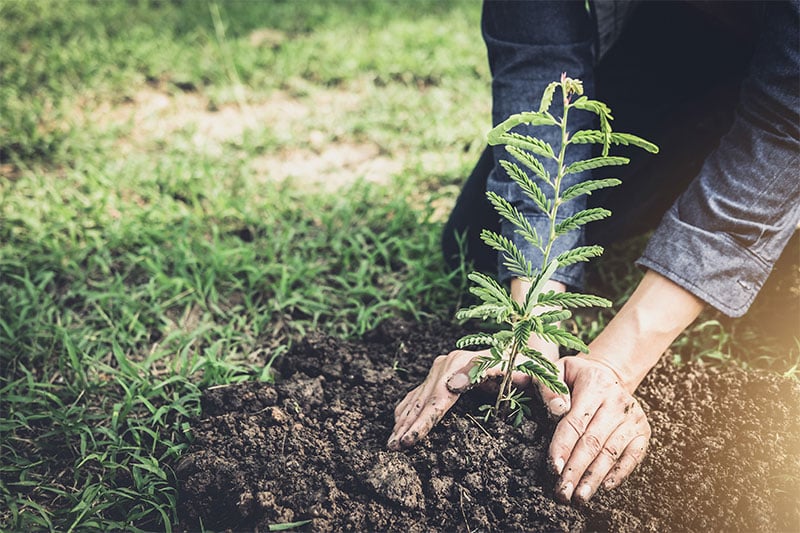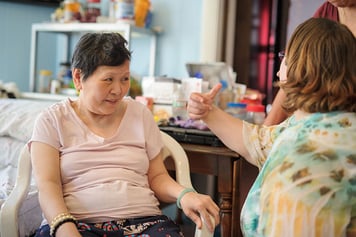In 2017, a colleague here at Amedisys passed along an email about the Arbor Day Foundation, the largest 501(c)3 nonprofit membership organization dedicated to planting trees. The group has planted more than 350 million trees in neighborhoods, communities, cities, and forests around the world, all to create a greener, healthier future for everyone.
We later found out that the foundation runs a program called “Trees In Memory,” where a tree is planted to memorialize someone who has passed. The colleague sent the email hoping that perhaps some offices would like to participate. If we planted a tree for every single patient who passes on our service, we knew we could be a part of something very special.
[action 1]
It was one of those moments in life. A moment where you just know. And we knew. It would be right for us to do this.
We started with a pilot initiative for “Trees in Memory” in March 2018 in our North Carolina hospices and in July took it companywide. Eventually, once our acquisition of Compassionate Care, RoseRock, Asana and Aseracare Hospices were integrated, almost every Amedisys hospice across 34 states participates in the planting of memorial trees.
Ever since then, the Arbor Day Foundation has planted a Douglas Fir, a popular choice for Christmas trees, to memorialize every Amedisys hospice patient who has passed away while in our care. Between July 2018 and December 2020, that amounted to 66,384 trees, and through the first quarter of 2025, we have now reached 104,782 trees planted!
Through our partnership, the foundation planted a four-inch sapling in one of five national forests. Douglas Firs grow as much as 24 inches a year and eventually attain heights of 40 to 70 feet. The 104,782 saplings honoring Amedisys patients are now sprouting robustly across thousands of acres in the Custer Gallatin Forest in south central Montana, the Chippewa National Forest in northern Minnesota, the Pike National Forest along the front range in Colorado, the Klamath National Forest in northern California, and the Kisatchie National Forest in Louisiana.
With every patient departure, Amedisys sends a sympathy card to the family. “It was an honor and a privilege to care for your loved one,” it says. The card explains how a tree is being planted in a national forest as a “living tribute from the Amedisys family.” It concludes, “With thoughts of comfort and peace during your time of sorrow, may this tree eternally grow and blossom in loving memory.”
Families have expressed appreciation for the gesture. Our care centers have received thank-you notes for the sympathy cards and the planted trees. Family members say how wonderful it is to get a tree planted in memoriam for mom or dad or grandma or grandpa. And those responses warm my heart.
If families sign a release form, the name of the loved one honored appears on the foundation’s website. Families can also find out in which forest the tree is located.
We’ve heard some families say they want to visit the forests where a tree is planted for a loved one. One park is evidently considering installing a “Trees in Memory” section, a sacred space with benches where families can reflect on the lives once lived and admire the trees now growing tall.
For now, those 104,782 Douglas Firs planted for Amedisys patients are thriving in silence in our national forests. These pyramidal monuments are protecting wildlife, reducing pollution and providing oxygen, clean ground water and stability to the soil. Antelope, deer, elk, mountain goats and mountain sheep eat the twigs and foliage.
Above all, these trees bring peace and comfort to the families left behind. They are living monuments that inspire remembrance of the past while hinting at the future ahead. They embody how life always manages to renew itself. A vibrant, beautiful tree benefits everyone in this and future generations and is perhaps the most fitting memorial of all.





